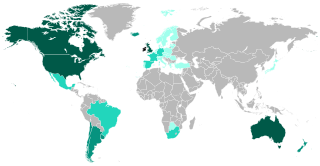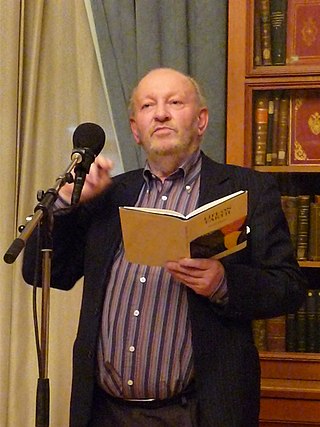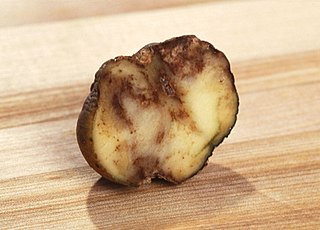
Belfast is the capital city and principal port of Northern Ireland, standing on the banks of the River Lagan and connected to the open sea through Belfast Lough and the North Channel. It is second to Dublin as the largest city on the island of Ireland with a population in 2021 of 345,418 and a metro area population of 671,559.

The Irish diaspora refers to ethnic Irish people and their descendants who live outside the island of Ireland.

Ireland is an island in the North Atlantic Ocean, in north-western Europe. It is separated from Great Britain to its east by the North Channel, the Irish Sea, and St George's Channel. Ireland is the second-largest island of the British Isles, the third-largest in Europe, and the twentieth-largest in the world.

Ireland's economic history starts at the end of the Ice Age when the first humans arrived there. Agriculture then came around 4500 BC. Iron technology came with the Celts around 350 BC. From the 12th century to the 1970s, most Irish exports went to England. During this period, Ireland's main exports were foodstuffs. In the 20th century, Ireland's economy diversified and grew. It is now one of the richest countries in the world by GDP per capita.

SS Nomadic is a former tender of the White Star Line, launched on 25 April 1911 at Belfast, that is now on display in Belfast's Titanic Quarter. She was built to transfer passengers and mail to and from the ocean liners RMS Olympic and RMS Titanic. She is the only surviving vessel designed by Thomas Andrews, who also helped design those two ocean liners, and the last White Star Line vessel in existence today.

The Cobh Heritage Centre is a museum located in Cobh, County Cork, Ireland. It is attached to Cobh railway station.
Donald Harman Akenson is an American historian and author. Notably prolific, he has written at least 24 book-length, scholarly monographs, 4 jointly-authored scholarly books, 6 works of fiction and historical fiction, and 55 scholarly articles. He is a fellow of both the Royal Society of Canada and the Royal Historical Society (UK). He is also a Molson Prize Laureate, awarded for a lifetime contribution to Canadian culture. He was awarded a Guggenheim Fellowship in 1984, and in 1992 he won the prestigious Grawemeyer Award, then the richest non-fiction book prize in the world. Akenson received his B.A. from Yale University and his doctorate from Harvard University. He is Distinguished University Professor and Douglas Professor of History at Queen's University in Kingston, Ontario, Canada, and was simultaneously Beamish Research Professor at the Institute of Irish Studies, University of Liverpool (2006–10), and senior editor of the McGill-Queen's University Press (1982-2012).

Derek Mahon was an Irish poet. He was born in Belfast, Northern Ireland but lived in a number of cities around the world. At his death it was noted that his, "influence in the Irish poetry community, literary world and society at large, and his legacy, is immense". President of Ireland Michael D Higgins said of Mahon; "he shared with his northern peers the capacity to link the classical and the contemporary but he brought also an edge that was unsparing of cruelty and wickedness."

Tourism in the Republic of Ireland is one of the biggest contributors to the economy of Ireland, with 9.0 million people visiting the country in 2017, about 1.8 times Ireland's population. Each year about €5.2bn in revenue is made from economic activities directly related to tourists, accounting for nearly 2% of GNP and employing over 200,000 people. In 2011 alone, Ireland was voted 'Favourite holiday destination in the World' by readers of Frommer's Guide, Lonely Planet listed Ireland as the world's friendliest country and Cork City as one of the top ten cities in the world and the Irish tourist boards website, DiscoverIreland.com, was named the best tourist board website in the world. Most tourists visiting Ireland come from the United Kingdom, the United States, Germany and France.

Titanic Quarter in Belfast, Northern Ireland, is a large-scale waterfront regeneration, comprising historic maritime landmarks, film studios, education facilities, apartments, a riverside entertainment district, and the world's largest Titanic-themed attraction centred on land in Belfast Harbour, known until 1995 as Queen's Island. The 185-acre (75 ha) site, previously occupied by part of the Harland and Wolff shipyard, is named after the company's, and the city's, most famous product, RMS Titanic. Titanic Quarter is part of the Dublin-based group, Harcourt Developments, which has held the development rights since 2003.

Edward Neville Isdell is an Irish businessman, former chair and CEO of The Coca-Cola Company and currently president of the WWF.

The European potato failure was a food crisis caused by potato blight that struck Northern and Western Europe in the mid-1840s. The time is also known as the Hungry Forties. While the crisis produced excess mortality and suffering across the affected areas, particularly affected were the Scottish Highlands, with Highland Potato Famine and, even more harshly, Ireland, which experienced Great Famine. Many people starved due to lack of access to other staple food sources.

Titanic is a musical with music and lyrics by Maury Yeston and a book by Peter Stone. It is based on the story of the RMS Titanic which sank on its maiden voyage on April 15, 1912.

TitanicBelfast is a visitor attraction opened in 2012, a monument to Belfast's maritime heritage on the site of the former Harland & Wolff shipyard in the city's Titanic Quarter where the RMS Titanic was built. It tells the stories of the Titanic, which hit an iceberg and sank during her maiden voyage in 1912, and her sister ships RMS Olympic and HMHS Britannic. The building contains more than 12,000 square metres (130,000 sq ft) of floor space, most of which is occupied by a series of galleries, private function rooms and community facilities.
George Millar is a Northern Irish singer-songwriter, guitarist and co-founder and leader of the Irish folk group The Irish Rovers. The Irish Rovers is a group of Irish musicians that formed in Toronto, Canada in 1963 and named after the traditional song "The Irish Rover". They are best known for their international television series, contributing to the popularization of Irish Music in North America, and for the songs "The Unicorn", "Drunken Sailor", "Wasn't That a Party", "The Orange and the Green", "Whiskey on a Sunday", "Lily the Pink", "Finnegan's Wake" and "The Black Velvet Band".

The CHQ Building, formerly known as Stack A, is an industrial building in Dublin, Ireland. CHQ stands for "Custom House Quay", named for the nearby Custom House. Known as the Tobacco Store to dockworkers, it was built in 1820 to store cargos of tobacco, tea and spirits. Tobacco and tea were kept in separate compartments above ground. Wine and spirit casks were stored in the vaults below ground.

Event Communications, or Event, is one of Europe's longest-established and largest museum and visitor attraction design firms; it is headquartered in London.
Dogpatch Labs is a startup and innovation hub situated in the Silicon Docks area of Dublin. The company's headquarters are located in the CHQ building. Dogpatch Labs consists of over 500 members from 100+ startups.
Richard Malone is an Irish artist and designer from Wexford, Ireland.


















